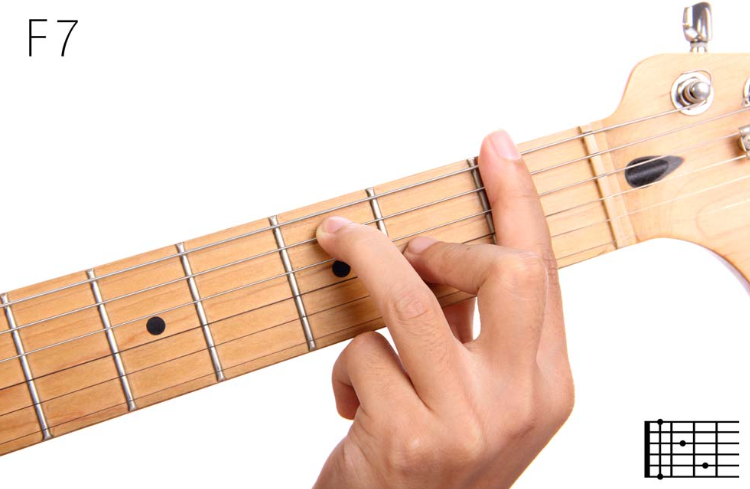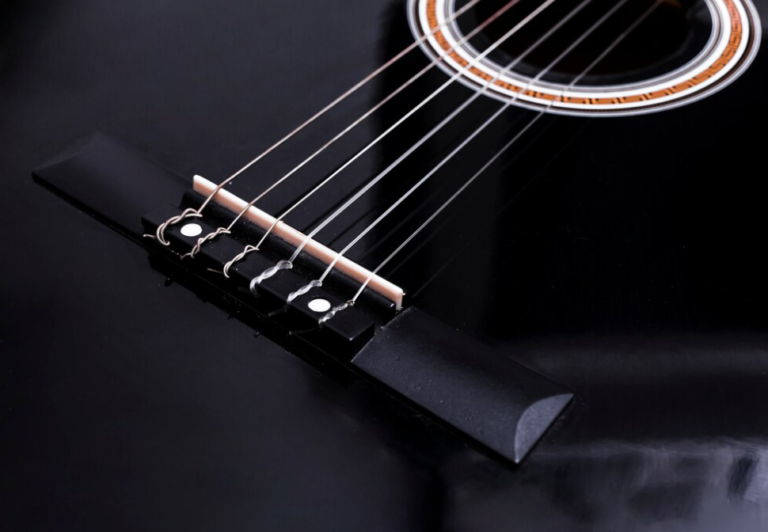Everything You Need To Know About Playing The F Chord

One of the most essential chords to learn on the guitar is the F chord. It’s a foundational chord that can be found in countless songs, and mastering it will open up many new possibilities for your playing.
To play the F chord, you’ll need to press down on specific frets and strings with your fingers. The three notes that make up the F chord are F, A, and C. These are the notes that give the chord its distinctive sound and character.
There are several common variations of the F chord, each with its unique qualities and uses in music. The most well-known variation is the F major chord, which is used in many popular songs across various genres. This chord consists of a root note (F), a major third (A), and a perfect fifth (C). It has a bright, uplifting sound that can add a touch of positivity to any song.
How To Play The F Major Chord
Learning how to play the F major chord will not only improve your guitar skills but also help you understand music theory better. As you practice this chord, pay attention to the specific finger placement and make sure each note rings clearly. With time and dedication, you’ll be able to play the F major chord with ease and incorporate it into your playing effortlessly.
Remember, the key to mastering any chord is consistent practice. Don’t be discouraged if it takes some time to get comfortable with the F major chord. Keep practicing, and before you know it, you’ll be strumming this essential chord like a pro. So pick up your guitar, tune those strings, and let’s get playing the F chord! # End of section
But wait, there’s more to learn about this chord. Did you know that there are also minor and dominant variations of the F chord? The F minor chord is similar to the major but has a slightly darker and sadder sound, making it perfect for emotional ballads or bluesy tunes. It consists of a root note (F), a minor third (Ab), and a perfect fifth (C).
On the other hand, the F7 chord has a dominant sound that adds tension and intrigue to any song. It’s made up of a root note (F), a major third (A), and a flat seventh (Eb). This chord is commonly used in jazz and blues music, but it can also add a unique flavor to rock and pop songs.
Learning these variations of the F chord will give you more options to play with and expand your creativity on the guitar. Take some time to practice each one and experiment with how they sound in different contexts. You may even come up with some new chord progressions or song ideas!
1. F Major Chord:

The F major chord is perhaps the most commonly used form of the F chord. To play it:
- Place your index finger on the 1st fret of the high E string (the thinnest string).
- Press down your middle finger on the 2nd fret of the G string (the 3rd string).
- Position your ring finger on the 3rd fret of the D string (the 4th string).
- Strum from the A string (the 5th string) down to the high E string.
2. F Minor Chord:

The F minor chord has a more somber and melancholic feel compared to the major chord. To play it:
- Bar the 1st fret with your index finger across all six strings.
- Place your middle finger on the 3rd fret of the A string (the 5th string).
- Position your ring finger on the 3rd fret of the D string (the 4th string).
- Press your pinky on the 3rd fret of the G string (the 3rd string).
- Strum all six strings.
3. F7 Chord:

The F7 chord introduces a bluesy and jazzy flavor to your playing. To play it:
- Place your index finger on the 1st fret of the high E string.
- Press down your middle finger on the 2nd fret of the G string.
- Position your ring finger on the 3rd fret of the D string.
- Strum from the A string down to the high E string.
Practical Applications:
Now that you know how to play the basic forms of the F chord, it’s time to put them to practical use:
- Song Accompaniment: The F chord is featured in countless songs across various genres. Practice transitioning to and from the F chord to play songs like “Wonderwall” by Oasis, “Let It Be” by The Beatles, and “Hotel California” by Eagles.
- Chord Progressions: Experiment with different chord progressions that include the F chord. Common progressions like F-C-G-Am are the foundation of many pop songs.
- Songwriting: Use the F chord to create your own original compositions. Combine it with other chords to craft unique melodies and harmonies.
Tips for Mastery:
- Practice Regularly: Like any chord, mastering the F chord takes practice. Dedicate time to practice transitions and finger placements.
- Use a Capo: If the F chord is too challenging initially, consider using a capo to raise the pitch and simplify the fingering.
- Patience is Key: Don’t get discouraged if it takes time to perfect. With persistence, the F chord will become second nature.
The F chord is a fundamental component of the guitarist’s toolkit. It opens the door to a world of musical possibilities, from classic rock anthems to soulful ballads. As you practice and become more comfortable with the F chord, you’ll discover the joy of creating beautiful music and expanding your guitar-playing skills. So, grab your guitar and start strumming—it’s time to embrace the F chord!





